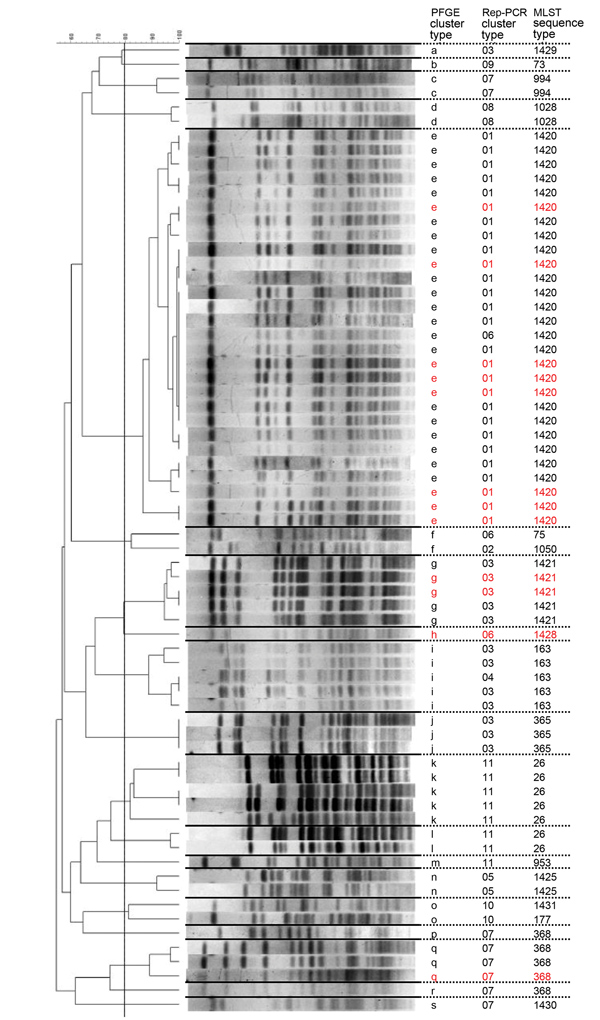Volume 25, Number 5—May 2019
CME ACTIVITY - Research
Novel Sequence Type in Bacillus cereus Strains Associated with Nosocomial Infections and Bacteremia, Japan
Figure 1

Figure 1. PFGE of the Tokyo strains of Bacillus cereus isolates, Japan. The 80% similarity cutoff for PFGE cluster typing is shown as a vertical line in the phylogenetic tree. Red letters and numbers represent samples isolated from patients with bacteremia. Rep-PCR cluster type and MLST sequence types are also shown. The Tokyo_ID31 strain was not analyzed. Scale bar indicates percent similarity. MLST, multilocus sequence typing; PFGE, pulsed-field gel electrophoresis; Rep-PCR, repetitive-element PCR.
1Current affiliation: Asahikawa Medical University, Asahikawa, Japan.
2Current affiliation: Japanese Foundation for Cancer Research, Tokyo, Japan
Page created: April 17, 2019
Page updated: April 17, 2019
Page reviewed: April 17, 2019
The conclusions, findings, and opinions expressed by authors contributing to this journal do not necessarily reflect the official position of the U.S. Department of Health and Human Services, the Public Health Service, the Centers for Disease Control and Prevention, or the authors' affiliated institutions. Use of trade names is for identification only and does not imply endorsement by any of the groups named above.